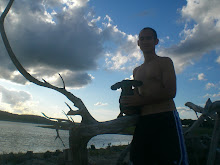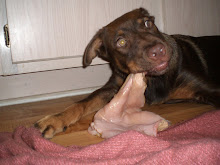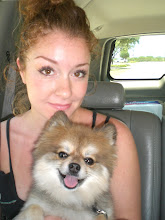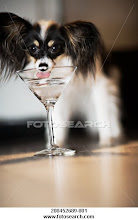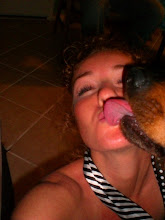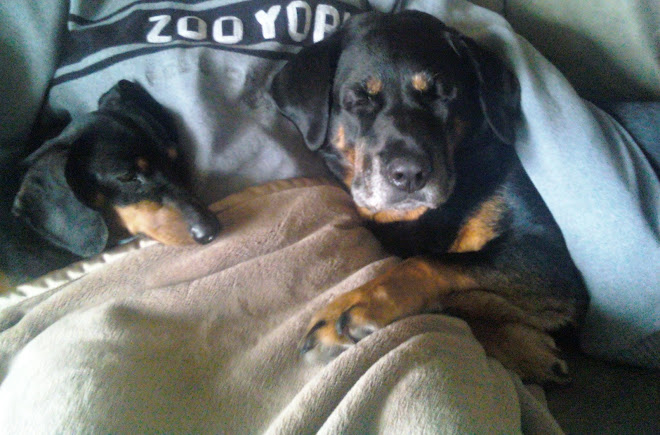skip to main |
skip to sidebar
This is a great question and a very important one. We all do not want our Great Dane pups to grow too fast, and we need to make sure they do not get too much calcium or protein, in order to protect their joints, bones, and structure. There is a great amount of misinformation that is out there about feeding a Great Dane pup raw.
The main myth is that the raw diet is too high in protein. This simply is just flat out false. The raw diet is approximately 17%-23% protein. The reason is that raw meat, bones and organ meat are mainly composed of moisture-approximately 67% give or take. If you want to see the proof, here is the link http://www.nal.usda.g... . From there type in "raw chicken breast" or "raw beef sirloin" and it will take you to the Nutritional Analysis for that item. Make sure you type RAW or you will not get the correct results.
. From there type in "raw chicken breast" or "raw beef sirloin" and it will take you to the Nutritional Analysis for that item. Make sure you type RAW or you will not get the correct results.
If you removed all moisture from raw, then yes it would be high in protein. And all lab analyses require moisture to be removed, when they test the food, which would explain why this myth spread in the first place. You can read the article I wrote about that here in more detail http://saddogsushi.bl...
It is now proven that a wolf and a dog are considered the same species:http://www.fiu.edu/~m... . Armed with that knowledge it makes sense that a Great Dane is no different. Guess what? Raw fed pups do not have unnatural growth spurts that often happens with puppy chow. Puppy chow has approximately 30% protein or higher-too much for a growing Great Dane pup. Grain-free kibble can have as much as 50%. With a raw diet, puppies grow at a steady, healthy, and natural pace.
. Armed with that knowledge it makes sense that a Great Dane is no different. Guess what? Raw fed pups do not have unnatural growth spurts that often happens with puppy chow. Puppy chow has approximately 30% protein or higher-too much for a growing Great Dane pup. Grain-free kibble can have as much as 50%. With a raw diet, puppies grow at a steady, healthy, and natural pace.
I know 100's of people who have started their Great Dane pups off on raw. When the question about waiting 1 year is brought up, the reply is always, "Why wait 1 year to feed them a species appropriate diet?" They DO NOT grow too fast, they DO NOT have joint issues from eating a diet that is balanced perfectly in phosphorous/calcium and it is not high in protein.
I know we all want the best for our growing Great Dane puppies, and it is important that the raw diet, if fed, is researched and done correctly. For instance, it would not be natural for a dog to eat mainly bone, or just chicken backs. So, as with everything, this has to be fed correctly, as close to Nature's Model as possible, to achieve remarkable results.
I know this is a heated topic "raw feeding Great Dane pups", but the proof is out there and available for anyone who wants to understand the truth about this issue. I used to also think the raw diet was high in protein, but once I researched and gained knowledge, it was an amazing discovery. I can definitely say that I recommend starting your new puppy on a raw diet. You can email me if you have anymore questions or just need help with how to do that.
Thank you,
Alissa
What I mean is: feed meals of good quality raw fat-this will get that coat to shine and that energy up. Feed to bowel tolerance, but I cannot stress enough-do NOT trim the fat. If you do, save it. Good quality animal fat is the key to having a balanced diet. As humans, we are inclined to think "trim the fat", but in the long run you will be hurting your dog or cat. Remember the only 2 building blocks a dog has are protein and fat-connective tissue, skin, etc. Think of fat like vegetables (to humans).
Personal experience-Ikura, raw fed since 12 weeks, will often fast herself and high energy days we will lay out turkey necks, beef liver, beef patty mix, and beef fat (from the heart). She will sniff everything and go right for the beef heart fat. She will gorge eat this-no side effects, no gas, no runny stools. She knows what her body needs.
We just rescued Shadow, underweight for a Dane-always hungry-109 lb male. We have slowly been feeding him more each day. Let me stress, he is underweight. He ate turkey necks the first night we had him. The next night, beef mix. His gas was off the hook the first night. Gas mask style. Danes have big big gas. So we got it right.
First night 3 lbs of food. We have slowly been increasing. Feeding him almost like a puppy to build him back up. His edge has been taken off. He has a full belly for once. And, oh yeah, he craved/needed/ate, the fat. No side effects, just a happy lively dog. Now, too much bone brought on the gas, but the fat really helped balance him out.
It is such a beautiful thing to actually make that switch and realize your dog is a carnivore in every sense of the word
The raw diet is NOT high in protein.
This will blow many vets away, as they may insist that you cannot feed raw because it is too high in protein to giant breed puppies. Interestingly enough, they are comparing kibble to raw. Kibble has no moisture. Raw has about 67% water and is easily digestible. When you look at what your dog is actually consuming then you can get somewhere.
Kibble cannot be compared to raw, because it is completely different in its composition. If you removed all of the moisture from raw, then it would be high in protein, but we are not feeding it that way, ever. So dehydrated treats would be high in protein, but raw, as fed, is not.
The raw diet averages out to about 20% protein. Some grain-free kibbles have as much as 50%. If you took all the moisture out of raw chicken it would have about 70% protein. But, we are not feeding that way, so the raw diet is NOT high in protein. It is about 17-23% protein. So it is wonderful and safe to feed giant breed puppies a raw diet.
Our rescue Rottweiler Lola has had Pancreatitis since we got her. She was rescued from a horrible breeding program, where she lived her life in a small cage on her side, with a clamp around her mouth holding it shut. She endured all the extremes of weather, with no relief. During the many years that she lived like this, her immune system was destroyed.
We truly get to witness the slow, but definite healing that takes place when a raw diet is introduced after a life time of abuse and damage to the system and spirit. It is a slow process and doesn't happen over night, but it happens indefinitely.
Lola is not on any prescription meds, and gets a diet low in fat, smaller meals per day, and WAY more meat than bone. For supplements she gets Omega 3 and a digestive enzyme (except when fed green tripe). If we stray at all from feeding her small, low fat meals, with little bone content, she will go into an attack.
She recently had an attack, her first since her switch to her new plan. The reason was she got into Ikura's meal-which was a whole chicken. Before we could get to her it was down the hatch. We didn't know what to expect and if it would affect her negatively. Sure enough, she got sick.
We knew that we could only feed her green tripe until she got better. It is the only food that Lola can eat and doesn't need enzyme powder. The juices that flow from the tripe, are high in digestive enzymes, Lactobacillus Acidophilus (main ingredient in probiotics), and the high acidic pH in the gastric juices aid in digestion. This is what is used in the expensive meds that you need to treat Pancreatitis. So it dawned on me...
When a dog has an attack you need to make sure they stay hydrated and get enough nutrients. Rather than feed her the whole pieces (after an attack you want to keep it easy on the pancreas and fast the dog), I poured about 2 cups of the juices into her bowl. She lapped it up and passed out after in pure bliss. All of her symptoms completely halted, she did not throw up, she was hydrated, her gums were pink and healthy. When she awoke I took her for an easy, calm walk. Then I fed her the second dose and she healed for the remainder of the day.
She is totally back to normal, and eating green tripe meals everyday. I just wanted to share this observation with anyone who struggles with a dog with Pancreatitis or the like.
I have heard it said-"Picky eaters are not born, they are created"...and I find that statement to be 100% true.
When I started feeding Teddy, my dachshund, raw he took to it right away. He ate everything without even a question. Then, one day he looked up at me like "What the heck did you just put in my bowl? I am NOT eating that!" He took one quick sniff and walked away. This was the same food he had been devouring for months. He had a variety of different meats and this was one of the mixes. I was perplexed. Was he sick? Did he not like it anymore? Did I add too much of one thing or another? None of those questions were even close to the real issue. The answer was much simpler than that.
He just wasn't hungry.
How did I figure this out? Well, after recalculating his daily intake and realizing I was off and feeding him too much I cut back his food. There must have been a time period within this food intake switch when he was really hungry, because he never again even thought twice when I put food out for him. Being a little hungry once for Teddy was enough to never put his nose up at food again. Now, he will eat absolutely anything raw I put in front of him. He will NOT eat kibble, grain, a chip dropped on the ground, anything that isn't raw, meat, or bone. He is a true carnivore and he is definitely not picky for anything raw or meaty.
Something to be noted is that some dogs fast themselves and don't want to eat everyday. If they have normal energy levels and are drinking water normally then there is nothing to be alarmed about. It is actually very natural and very healthy for a dog to self-regulate like that.
Now what if the issue is that your dog is hungry, but just won't eat what you put out for him? This is what you must do and you must be very disciplined, or else you will have a dog running you around in circles tripping over his tail!
This is the scenario: You put out your dog's food. Your dog sniffs it, maybe licks it and walks away. Leave the food out for 15 minutes. Some dogs like their food room temperature. If still untouched then put the food away until next mealtime. Between this time DO NOT feed your dog any "yummy treats", kibble, table scraps, etc. Be strong and know that you need to decide what your dog eats or you will both be living a very stressful life if he is choosing the menu.
Next mealtime put the food out again. If he does the same thing you can try to add Parmesan cheese, garlic powder, something to entice him just to realize that it is real, yummy, healthy food in front of him. Then walk away. Do not encourage him to eat. Do not praise him if he eats. And especially DO NOT throw any other nervous, concerned energy out there. Just know in your mind that your dog will not starve himself. If he is still not eating after 15 minutes, pick up the food and put it up until next mealtime. Now, if you have kibble in the house, dog treats, raw hide, anything that he knows you can feed him if he refuses for long enough, please get rid of it. Dogs are smart and if he has gotten you to give in before then he knows you most likely will again.
Keep strong and when you put the food out next mealtime you may not even have a chance to blink before it is gone. After that your dog will eat whatever you offer.
Remember you are not starving your dog; they are simply refusing to eat food that you offer. Eventually they will come around and they will definitely thank you for it!
If you are reading this then you either have already begun to use S.A.D. Dog Sushi's service or you are just curious about how it all works. This short article should be helpful to both parties.
After you give us your dog's weight and receive your first shipment of food, you may not be sure exactly how to feed the food, in what order, and if you have to weigh anything out. Here is a step-by-step article addressing just that.
We package the food in large Ziploc bags, within those bags are smaller packs, measured out for each dog. The large Ziploc bags have numbers at the top. The first day of feeding will have a #1. The contents of the #1 bag will have a 2-3 day supply of food, individually wrapped and weighed out with your dog's first letter of their name marked on it. The #1 large Ziploc bag will tell you what is in the 1-2 week batch of food. The first week of food will just be chicken backs/necks. We introduce 1 protein at a time to make sure there are no allergies, to keep the dog from having diarrhea, and to make it easy for the feeder.
Since the first week of food is just backs/necks or both, one package inside the Ziploc will represent 1 day of food. If you like to feed 2 x/day then just take out half in the a.m. and feed the rest in the p.m. If you have a puppy, we will separate it into 2-3 packages for you, since puppies need to eat more times per day.
The second week we will introduce another protein and the patties. So the raw meaty bones will still be chicken and the patties will either be turkey, pork, or beef. They will also have 10% organ meat (bone ground in is another option). The patties will either be in their own large Ziploc bags, with 3-4 days of patties in each bag or in with the RMBs. Either way, it will all be labeled and easy to follow. Your dog will get one patty pack and one RMB pack per day, so one patty pack and one RMB pack equals one full day of food. These will already be weighed out for each dog and labeled so you know who gets what. All you have to do is take it out of the package and feed.
As the diet progresses, we slowly introduce more variety, so we can monitor your dog along the way. We can find out what works best for you and your animal, since everyone, even furry-ones are unique, and have their own special needs and preferences.
There is nothing better than starting a puppy off on the right foot; that includes feeding the best and healthiest diet possible. A puppy fed raw will know how to crunch and tear apart those bones right off the bat. Their jaw strength isn't quite the capacity of adults, but they have sharp teeth and instinct going for them.
At first, you may need to hold the bone or meat out for them so they can really get into it. Soon enough they will be using their own paws to hold the bone as they pull off the meaty meat. My puppy is such an excellent raw eater. When I watch her it reminds me of watching wolves or lions on National Geographic tear apart their prey. She even makes the same facial expression as she crunches down on that meat and bone.
Chicken bones will be the easiest for the dogs to eat at first, since they are so pliable, flexible, and soft. My 13 week old puppy (German Shepherd/Rottweiler/Red Doberman) can also eat lamb breast bones with no problems at all. Also, make sure to keep bones out for teething, such as beef necks, ribs, or other beef bones. My puppy does not even think to chew on the furniture or my shoes when she has those bones to help her with teething.
So how many times do you feed per day and how much? Since puppies have small bellies and fast metabolisms, they need to eat more, smaller meals per day. 3-5 meals per day may suffice. A good place to start is to feed them 2-3% of their expected, ADULT body weight broken up into small meals. But, puppies are also excellent self-regulators. If you let them eat when they are hungry and stop when they are full they will carry on this self-regulatory trait into adulthood. It is another benefit of raw feeding. Kibble has the opposite effect. It prohibits puppies and dogs from knowing when they are full, so some dogs eat kibble like gold fish eat flakes...fast and mindlessly. To us it is like eating french fries or sugary treats.
Finally, make sure to introduce variety early on. You will have a puppy who will not be a picky eater as an adult. Even if your pup turns down food one time, reintroduce it again. One try is never enough for a puppy. Also, the variety will create a well-balanced diet for your furry baby.

